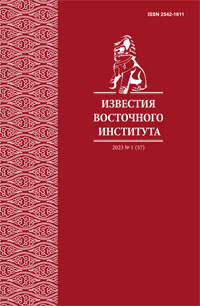Through discourse – to the heart of language: how neologisms are transferred
DOI:
https://doi.org/10.24866/2542-1611/2023-1/106-114Keywords:
linguistic creativity, language, discourse, neologism, transferAbstract
The article discusses the problem of how neologisms enter the basic stock of a language in general and a language for special purposes in particular. The main thesis is that linguistic neologisms can become fixed in language only through discourse, namely through a specific functional type of discourse, such as the literary-artistic and the scientific. At the same time, depending on the nature of a particular discourse, this or that mechanism of fixation and circulation of a new word, concept, term or concept is triggered. The mechanisms of production and transfer of new artistic concepts and scientific terms in are considered in case studies of experimental artistic texts by Walt Whitman and Velimir Khlebnikov and linguophilosophical texts by Wilhelm von Humboldt and Mikhail Epstein. These examples demonstrate differences in the mechanisms of language creativity, on the one hand, and discourse creativity, on the other.




